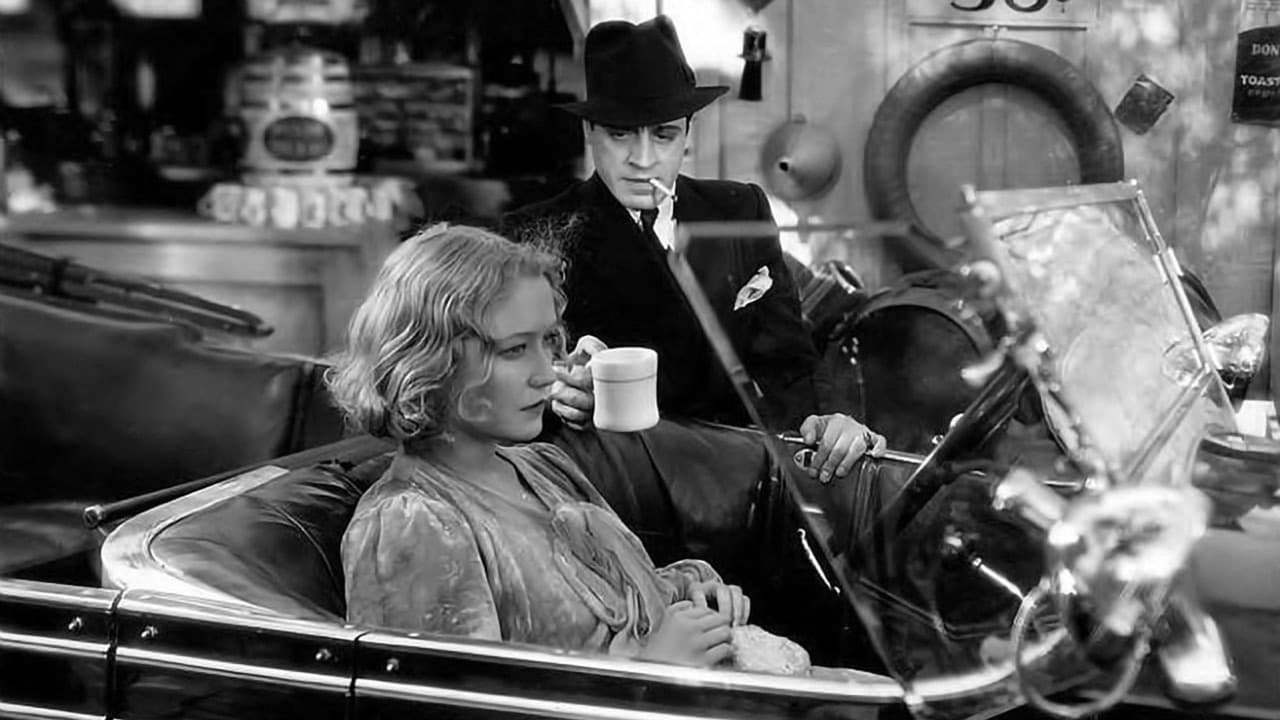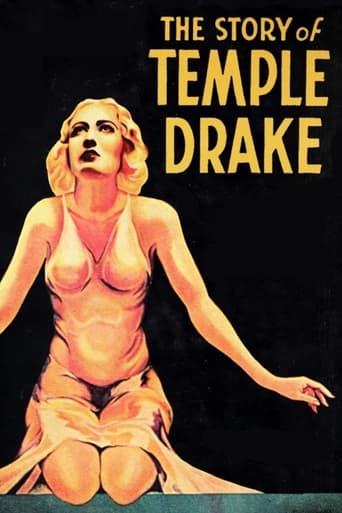

The Story of Temple Drake was one of, if not THE film that helped to finalize the Motion Picture Production Code Censorship that became heavily enforced from 1934 to the 1950s. But I have to say that although I see how the story could've been obscene and offensive, to me it comes off as corny and downplayed.The characters all seem to be caricatures of their novel selves and it looks as if the film makers were afraid to dive into the depth of the plot line and the characters they were given. The book it was based on, "Sanctuary", was dark and menacing but there is almost no tension here. A sad fact because there is ample opportunity to make the viewer uneasy and angry, but instead you are sad and confused. Sympathy for Temple Drake is automatically given, being a victim of rape, but not a lot in the film gives you a sense of personal sympathy. In fact, the movie seems to go out of its way to make you not like her, as if they want you to blame her for the horrible things that happen to her.Maybe it's a sign of the times, or maybe I'm too much of a 21st century gal, but this movie came across as ridiculous to me. I do believe there can be an epic movie here, the story is timeless and Miriam Hopkins is wildly talented and capable of such a meaty role, but this one fell far short of the mark of brilliant and I cannot believe this was the film sited to enact and enforce the "Hays Code" that gave us the golden age of Hollywood. 5.4/10
... View MoreEven for a pre-Code movie, this is pretty tough stuff. Granted, it doesn't get into the most sordid aspects of Faulkner's novel - a pot-boiler that he wrote when his serious works failed to earn him any money - but it's still very somber: a Southern society girl out on a binge with a drunken playboy gets raped by a gangster, set up in a Memphis brothel, and then finally kills the gangster. (In the novel, the gangster, originally named Popeye, is impotent, and so likes to watch others do what he cannot do.) You can certainly understand why the League of Decency went after this. And, frankly, I'm not sure I see what the point of making this movie was. I don't know who would enjoy it.Which is not to say that it's a poorly made movie. Quite to the contrary.Miriam Hopkins, whom I know from a string of fluffy mildly suggestive Ernst Lubitsch-type comedies - The Smiling Lieutenant, Trouble in Paradise, Design for Living - gives a very impressive performance here as a Zelda Fitzgerald type who ends up being terrified out of her wits when she encounters a world of people very different from her native high-society circles. I have a lot more respect for her as an actress after seeing this.The direction here, by Stephen Roberts, is also quite good at times, with very effective cinematography in the scenes set at the gangsters' hideout.I can imagine that this movie would be very unpleasant viewing for a lot of women. It tells a gruesome story, and does nothing to keep it light. It's certainly worth seeing for Hopkins' performance, but it won't put you in a good mood.
... View MoreThe Story of Temple Drake (1933) is available on a 6/10 DVD from a minor company and even this somewhat indifferent pressing of an MCA TV print does little to lessen the power and intensity of this engrossing film noir, astutely adapted from a William Faulkner novel by Oliver H.P, Garrett, vibrantly directed by Stephen Roberts, and atmospherically photographed in effectively noirish semi-darkness by the brilliant cinematographer, Karl Struss. Bernard Herzbrun's appropriately seedy sets are also a major plus. Miriam Hopkins not only models her Travis Banton costumes with style, but gives the most vigorous and skillful performance of her career. Hero William Gargan lacks charisma, but his role is fortunately not over-large and he is easily overshadowed by Jack La Rue in one of his most chillingly villainous portraits of evil.
... View MoreBased loosely on Faulkner's novel Sanctuary(but watered down), this film is a Southern Gothic tale of a spoiled southern belle named Temple Drake(Miriam Hopkins)who is the town tease, and loves to get all the local boys hot & bothered, only to leave them cold. One night with one of her beaus, they are involved in a car accident that leaves them stranded at a house where there's bootlegging going on, with an assorted lot of bootleggers,getting drunk. The head of them,a gangster from the city named Trigger(Jack La Rue)sees Temple,wants her as his, and nothing will stop him. The morning after, with Temple having a restless night in the barn, being guarded by Tommy(James Eagles), the feeb.She is trapped like a rat by Trigger, who kills Tommy, and then rapes her. Trigger then hauls Temple off to the city, to Miss Reba's place, a brothel, and she becomes his sex slave. Temple is so shell shocked by the rape, she stays there with Trigger, until an old beau, Stephen (William Gargan)who is defending Lee Goodwin(Irving Pichel) in the death of Tommy, comes looking around for Trigger. Stephen can't believe his eyes that Temple has taken up with Trigger,and wants to bring her back home. Temple then acts the part of a fallen woman, when she sees Trigger getting ready to kill Stephen, saying that she wants to be with Trigger. After Stephen leaves, Temple decides it's the best time to get out of there, but Trigger starts to beat & assault her again, she then shots Trigger dead, and goes back home. Back home, Temple has to take the stand and clear Lee Goodwin in Tommy's death.The whole cast is great, the best parts are the brothel scenes,which are so hot one could fry an egg on them. I really enjoyed the performance of Jack La Rue, who's Trigger is so hot & so sleazy, it's perfect. Also the fact that this film raises profane thoughts in one's head, that Temple may have enjoyed the rape(the very end of the film), makes this film one of the best of the pre-code era.
... View More